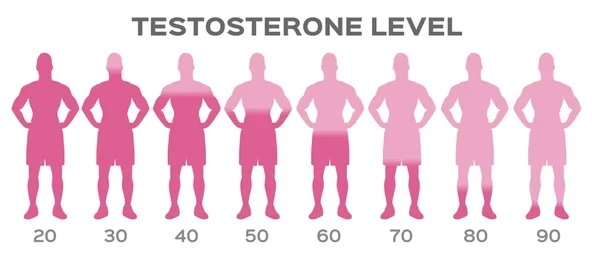At First Point MD, we recognize that hair loss is not merely a cosmetic concern—it carries psychological impact, alters self-image, and often prompts urgency for solutions. Understanding the hormonal underpinnings of male pattern baldness (androgenetic alopecia) is crucial to making informed decisions about prevention and treatment. In this detailed guide, we examine the roles of testosterone, dihydrotestosterone (DHT), genetics, and treatment avenues—delivering evidence-based insights and actionable strategies.
Introduction: The Hormonal Landscape of Hair Growth
Hair growth is a complex interplay of hormones, genetics, local tissue environment, and cellular signaling. Among hormones, androgens—especially testosterone and its more potent derivative DHT—are central to understanding male pattern hair loss. Notably, not every man with normal testosterone levels develops baldness; rather, it’s the sensitivity of hair follicles to DHT and their local conversion of testosterone into DHT that drives the process.
Testosterone vs. DHT: Biochemistry and Physiological Roles
Testosterone: The Precursor Androgen
-
Testosterone is the primary male sex hormone, produced in the testicles, adrenal glands, and a small fraction in peripheral tissues.
-
In circulation, most testosterone is bound to sex hormone-binding globulin (SHBG) or albumin; a small fraction remains free and bioavailable.
-
Testosterone itself exerts effects on muscle, bone density, libido, and secondary sexual characteristics, but its direct influence on scalp hair is limited.
DHT: The More Powerful Derivative
-
Dihydrotestosterone (DHT) is formed when the enzyme 5-alpha reductase converts testosterone into DHT in peripheral tissues such as skin, scalp, prostate, and hair follicles.
-
DHT binds to androgen receptors in hair follicles with 5 times greater affinity than testosterone, making it more potent locally in driving effects.
-
Although circulating DHT levels are low compared to testosterone, localized production in scalp follicles can be much higher, magnifying its impact.
-
DHT is important in normal male physiology (development of male genitalia, prostate growth, body hair) but becomes problematic in genetically predisposed hair follicles.
How DHT Causes Hair Follicle Miniaturization
Men with androgenetic alopecia exhibit a cascade of effects mediated by DHT on susceptible hair follicles:
-
Follicular sensitivity
Some hair follicles, due to genetic predisposition, express more androgen receptors (AR) or have greater sensitivity to DHT. Even normal DHT levels can trigger a response. -
Shortening of the anagen (growth) phase
DHT accelerates the transition from the active growth phase to the resting phase, reducing hair fiber length. -
Miniaturization of follicles
Over time, terminal (thick) hairs gradually convert into vellus-like, thin hairs, and the follicle shrinks in diameter and depth. -
Reduced hair density & eventual dormancy
As miniaturization continues, some follicles cease production altogether, leading to bald patches. -
Local biochemical changes
DHT triggers oxidative stress, inflammatory mediators, and changes in growth factor signaling that further degrade the follicle environment.
Animal models support these mechanisms: DHT exposure induces early regression, reduced density, and morphological changes in murine hair studies.
Testosterone Levels and Baldness: What the Evidence Says
A common misconception is that high testosterone equates to baldness. In truth, the relationship is more nuanced:
-
Many men with normal or even low testosterone levels still develop male pattern baldness.
-
The key variable is follicular sensitivity or enzymatic activity converting testosterone to DHT, not sheer testosterone quantity.
-
Some studies suggest that balding men might actually exhibit higher activity of 5-alpha reductase or increased androgen receptor expression rather than higher testosterone itself.
-
Research indicates that elevated DHT/testosterone ratio (rather than absolute testosterone) correlates with alopecia.
In summary: Androgenetic alopecia is not a disease of testosterone excess but one of over-responsiveness to DHT at hair follicles.
Genetics, Androgens & Other Contributing Factors
While DHT is a central actor, genetics, environment, and scalp microenvironment modulate the outcome.
Genetics & Androgen Receptor (AR) Gene
-
The AR gene is located on the X chromosome (inherited from mother). Variants in AR gene are strongly linked to male-pattern baldness risk.
-
Many men with familial baldness carry AR polymorphisms that make their hair follicles more responsive to androgens.
-
Baldness is polygenic: multiple genes (not just AR) modulate susceptibility.
5-Alpha Reductase Enzymes
-
There are two principal isoenzymes: Type I and Type II. Type II is especially relevant in the scalp. Increased local expression or activity of 5α-reductase enhances DHT generation.
-
Some rare conditions (e.g. 5α-reductase deficiency) result in absence of male pattern baldness, despite high testosterone levels—emphasizing the critical role of DHT.
Scalp Microenvironment & Inflammation
-
Local inflammation, oxidative stress, microvascular changes and dermal adipose signaling may exacerbate follicle vulnerability.
-
Dysregulation of growth factors (e.g. VEGF, IGF, Wnt/β-catenin pathway) can impair hair physiology.
-
Aging, UV damage, metabolic factors, and lifestyle (smoking, diet, stress) further contribute to progression.
When Balding Begins: Clinical Patterns & Progression
Male-pattern baldness (MPB) follows a stereotyped pattern, often described by the Hamilton–Norwood scale:
-
Hairline recession at the temples (M-shape)
-
Thinning at the vertex (crown)
-
Eventually, frontal and vertex areas merge to form larger bald patches
The hallmark of MPB is progressive miniaturization in androgen-sensitive zones of the scalp, with relative sparing of others (e.g. back, sides) due to lower androgen receptor sensitivity in those areas.
The rate of progression depends on genetics, age of onset, hormone dynamics, and external influences.
Diagnosis & Hormonal Evaluation
When assessing a man with pattern hair loss, the following steps are standard:
-
Clinical evaluation
-
Pattern, extent, onset age, rate of progression
-
Family history, medications (e.g. steroids, androgens, finasteride)
-
Scalp exam: degree of miniaturization, scalp health
-
-
Laboratory hormone assessment (as needed)
-
Total testosterone, free testosterone, SHBG
-
DHT (rarely measured in routine practice)
-
LH, FSH, thyroid hormones, prolactin, other endocrine causes
-
In selected cases, screening for metabolic syndrome, insulin resistance
-
-
Trichoscopy / Dermoscopy / Scalp biopsy
-
To confirm miniaturization, follicle count, inflammatory markers
-
Biopsy not always required unless atypical pattern or scarring alopecia suspected
-
-
Baseline imaging or imaging of scalp vasculature (rare)
The hormonal evaluation primarily rules out secondary causes of hair loss rather than diagnosing androgenetic alopecia per se.
Treatment Strategies: Targeting DHT & Hair Growth
Because DHT is centrally implicated, many treatments aim to inhibit DHT formation or block its effects—while other options promote follicular health or hair regeneration.
5-Alpha Reductase Inhibitors (5-ARIs)
-
Finasteride
-
A selective inhibitor of 5α-reductase Type II.
-
Oral daily use reduces circulating DHT ~65–70% and lowers scalp DHT levels.
-
Clinical trials show slowed hair loss and some regrowth in many men.
-
Potential side effects: sexual dysfunction, mood changes (rare).
-
-
Dutasteride
-
Inhibits Type I and Type II 5α-reductase: more potent DHT suppression.
-
Off-label for hair loss in many regions; greater efficacy but higher risk of side effects.
-
Topical Antiandrogens / DHT Blockers
-
Topical finasteride or dutasteride, ketoconazole shampoo (anti-inflammatory + weak anti-DHT), spironolactone topicals
-
These deliver localized effect with reduced systemic exposure.
Minoxidil (Vasodilator / Growth Promoter)
-
Does not directly affect DHT, but prolongs anagen phase, increases blood flow, and opens potassium channels to stimulate hair growth.
-
Often used in combination with DHT-targeting therapies.
Low-Level Laser Therapy (LLLT)
-
Promotes mitochondrial activity and microcirculation, may enhance hair growth.
Platelet-Rich Plasma (PRP), Microneedling, Stem Cell Therapy
-
Autologous growth factors, wound-healing induction, and stem cell signaling modulation.
-
Adjunctive to medical therapy, especially in early stages.
Hair Transplant Surgery / Follicular Unit Transplantation (FUT / FUE)
-
Relocation of robust hair follicles from non-sensitive zones to balding areas.
-
Best for stable, long-standing hair loss, often after medical therapies.
Emerging / Experimental Approaches
-
Androgen receptor antagonists, Wnt pathway modulators, stem cell activation, gene therapy
-
These remain under research and not standard of care yet.
Practical Guidance: What Men Can Do
-
Start early: Intervention before extensive miniaturization improves outcomes.
-
Combine therapies: Using finasteride + minoxidil + adjunctive measures often yields better results.
-
Monitor side effects: Periodic check-ups for sexual, mood, and systemic effects.
-
Lifestyle supports: Good nutrition, reduced inflammation (diet, smoking cessation), scalp care, stress management.
-
Realistic expectations: Treatments slow progression and may regrow some hair—but cannot recreate a full youthful head of hair in every case.
-
Adherence matters: Stopping treatment typically leads to resumption of hair loss within months.
Limitations, Risks & Considerations
-
Not all men respond to DHT-targeted therapy—roughly 30–40% are non-responders or show minimal regrowth.
-
Side effects, while uncommon, should be discussed openly (sexual dysfunction, mood changes, rare systemic effects).
-
Some BALD men have normal DHT levels—responsiveness, not level, is the critical factor.
-
Treatments must be sustained—discontinuation reverses gains.
-
Beware of unproven “natural DHT blockers” (saw palmetto, pumpkin seed oil)—evidence is limited.
Conclusion: Hormones, Hair & Hope
At First Point MD, we believe in empowering men with evidence-backed knowledge about hair loss. DHT is the pivotal mediator of androgenetic alopecia, functioning through highly sensitive hair follicles which respond disproportionately even to normal testosterone levels. Genetics, enzymatic activity, local scalp milieu, and lifestyle factors further sculpt the hair-loss journey.
While no intervention guarantees full restoration, early diagnosis, combined medical approaches, and consistency offer the best chance at preserving hair and slowing progression. For men facing balding, understanding the hormonal roots empowers them to engage proactively with clinicians, evaluate options wisely, and maintain realistic, hopeful perspectives.


